New Beginnings: Mark Jacobs Returns to Camelot
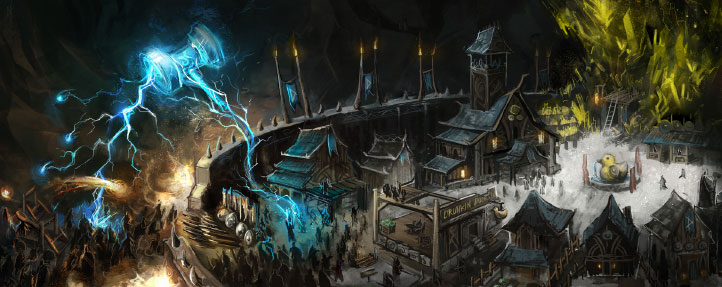
 If you told me 13 years ago that I would be interviewing Mark Jacobs for a Magazine I was producing, I would have laughed and said you were crazy. I never would have expected that today I would have the chance to go one on one with such an influential person in the industry.
If you told me 13 years ago that I would be interviewing Mark Jacobs for a Magazine I was producing, I would have laughed and said you were crazy. I never would have expected that today I would have the chance to go one on one with such an influential person in the industry.
Many of you will know Mark Jacobs as the mastermind behind the MMORPG classic Dark Age of Camelot. He has been creating games since 1983, and was one of the first to pioneer the MUD (Multi-User Dungeon) with Aradath (as part of his first company Adventures Unlimited Software Inc.) in 1986. He then created Dragon’s Gate (1989-2006), which today is still one of the longest running pay-to-play online games. He went on to form Interworld Productions (later renamed Mythic Entertainment), by merging A.U.S.I. with Rob Denton’s company ISI (at the time made up of Denton, Matt Firor, Don Campbell and Roger Shropshire). Rob and Matt continued with the new company when it was formed in Fairfax, VA, in 1995.
In March of 2011, Mark co-founded City State Entertainment™with Andrew Meggs (Bethesda Softworks™, Mythic Entertainment™, and Troika™ games) to produce, among other things, the next great expedition into Camelot.
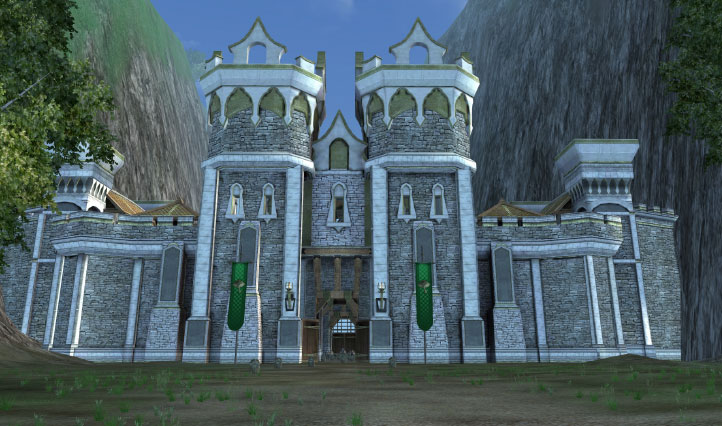
Thank you for joining us today. Your career has been filled with ups and downs, strife and success, and the rare chance to reimagine one of your greatest creations. When we talk about new beginnings I can think of no one that can match your story. Can you tell us a little bit about yourself and your career so far?
Sure! Happy to be here. It’s been a very interesting career, as my life has taken me from starting my first company (Adventures Unlimited Software Inc.) and creating my first commercial game while I was in law school, to creating one of the world’s first true MUDs (Aradath). That led to the halcyon days on GEnie (General Electric Network for Information Exchange) with my games Galaxy and Dragon’s Gate, to Interworld/Mythic in 1995. Then after creating about one dozen online games, we came near to bankruptcy in 1999, before I arranged the funding for Dark Age of Camelot and we enjoyed its amazing success. After that, there were a number of expansion packs, Imperator, and then the sale to EA (which was the company that almost put us under back in 1999) and my subsequent departure from Mythic (and contemplation of retirement) in 2009. I almost set up a company in Singapore (which is where the name City State Entertainment came from), which led to the company’s founding with Andrew Meggs, which in turn led to a highly successful Kickstarter for Camelot Unchained™.
It certainly has been a really interesting 30 years in gaming. And to think, it all started back in high school, with a broken Fortran Monrobot.
As one of the Co-Founders of Mythic Entertainment you played a massive part in the creation of Dark Age of Camelot, a game particularly special to the Gaiscioch and I. What was your role in the creation of this historical MMORPG?
I had three main roles in the creation of Dark Age of Camelot. First, as Lead Designer of Dark Age of Camelot, including the name of the game, was my idea. Mythic was on the verge of shutting down due to the loss of revenue from our games on AOL, after EA bought the AOL Games Channel. Every game we had up there but one were shuttered (including games that were in the pipeline), so EA could bring (or try to bring) their “higher-end” games there. We weren’t alone, as most companies who were doing business with AOL had their games removed from the AOL Game Channel.
We needed to find something else to keep the company going, and I decided to try to get the funding (again) for an MMORPG, due to the success of Meridian 59, Ultima Online, and Everquest. One of the games I had put forward was an MMORPG based on our Darkness Falls IP. I loved the concept, but I thought we could do even better if we found the right idea. Then one day I was in the shower, thinking about IPs that we could use, and the idea to use Camelot and call it Dark Age of Camelot came to me.
I went into Mythic and pitched it to Denton, but he said no, he wanted to do Darkness Falls, since he figured the Darkness Falls IP would be more popular than Camelot (and he was worried about how we could protect it IP-wise), and because the Darkness Falls game had its origin in his Tempest game. We argued about it, and eventually he said that if I could convince the team, he’d go along with it. My first stop was Matt Firor (who was one of Rob’s close friends even way before Interworld/Mythic), and Matt was enthusiastic about it. I went to a few other people (all of whom were Rob’s friends too) and they loved it. I then went back to Rob’s office and said that all his buddies - especially Matt - loved it, at which point he said he was fine with it. Keep in mind, even though I was CEO/President, for most of our years at Mythic Denton and I worked as a team, and I always wanted him on-board with my ideas. I didn’t want to “rule by fiat.”
My second role with Dark Age was as lead designer. While the overall vision of the game was mine, folks like Matt, Brian, Lori, and others not only had a huge role in shaping the game, but the IP as well, even though it wasn’t always their primary job. Most of the key people at Mythic had multiple roles (just like here at CSE), because the budget was tight. Matt was officially the producer, but he was also a writer and designer. Matt’s overall contribution to Dark Age of Camelot, from the earliest days of development to post-launch, was awesome. On the creative side of my end, I did everything from writing the occasional “white paper” to throwing out ideas for things, playtesting, and helping to balance the economy (most of the heavy lifting on the economy was done by Dave Rickey), etc.
My third role with Dark Age and Mythic was on the business and legal side. I would handle everything from being CEO/President, to taking the first pass on our legal affairs to save us money, signing my life away with loan guarantees for equipment, PR, and press, until the great Sanya Thomas (now Sanya Weathers) came on board.
I had other roles and responsibilities as well, but these three are a good start.
Mythic Entertainment really took a huge chance on Dark Age of Camelot, it being the first to pioneer siege warfare. What was going through your mind on launch day? Did you ever imagine that it would be such a huge success, and inspire a whole new genre of MMORPGs?
LOL, no. We were all just praying that the game wouldn’t blow up at launch, and that we would sell enough copies to keep the company going. I knew we had a good game on our hands, and thanks to the rigorous testing we did I was reasonably confident that we would launch well.
During development, I pushed the concept of “eliminating possible points of failure” from the client/backend side, and we even hired a talented and experienced guy by the name of Spyke Alexander (he had just come from Sony) to help analyze our approach and make sure we weren’t doing the dumb.
I also asked for some other outside help to verify that what we had built was smart and should, in theory, work. Fortunately, the great back end work we had done on other games and for Dark Age did its job beautifully, and that is testimony to the technical efforts led by Denton. However, you can never predict how the paying public will perceive your game, so we were all still very nervous about the game’s chances for success. Our partner, Vivendi Universal Games, loved what they saw, but their estimates were only about 40K initial sales, so none of us were sanguine about our chances for the game becoming the hit that it did.
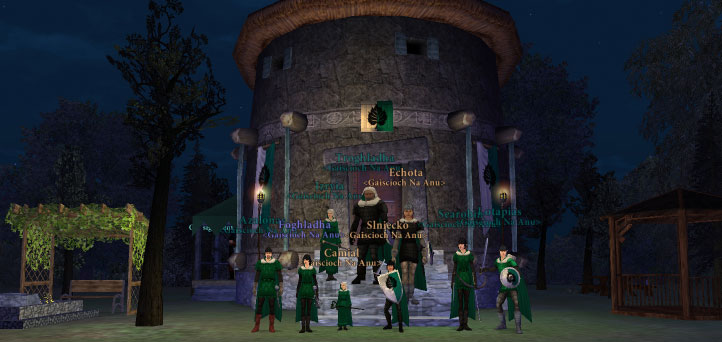
What was one of your favorite memories about the early days of Camelot?
Launch day! I went to all the stores that sold our game, and saw that most of them were sold out. At one point, Eugene Evans and I went to Best Buy, and when people weren't looking, we rearranged some of the shelves so our game was out in front.
At the time that you departed Mythic Entertainment, what was running through your head?
It was a total disaster for me on every level. I was furious at how I was treated by people that I had trusted and protected over the years, as well as some of the people at EA. This was devastating, since I was the one person who thought that WAR wasn't ready for launch, and said to EA that I didn’t believe we should launch against WoW’s expansion. Unfortunately, nobody on the team would say that they agreed with my assessment, so I couldn't even tell EA that my team backed me up.
I was truly caught between a rock and a hard place. The worst part of it was that I knew that I was right, but when your partner says “I know you don’t trust ‘XXXX’ but you can trust me”, and he’s been your partner for more than a decade, well, most people would usually agree, and I did. What a mistake that was.
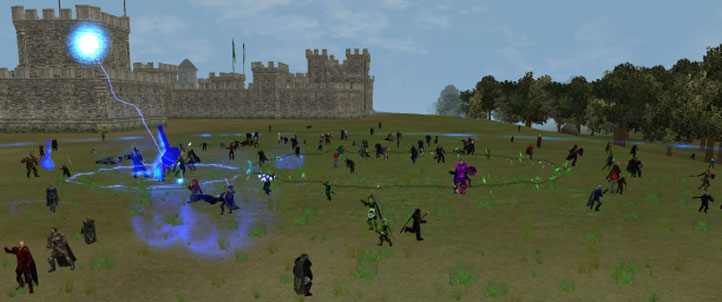
When EA and I parted ways I wanted to say goodbye to the team, and EA said sure, that was fine with them. However, the “senior leadership at Mythic” said I couldn’t. Nice, right? Put it this way, when one of those same “senior leadership guys” asked me after we parted ways “What can I (they) do to help?” and I said “Just make sure I get what I was entitled to from EA” this guy said to me, “I don’t want to get between you and EA.”
Wow. I had spent the last three years at EA refusing to put any blame on him, talking him up (as well as a few other folks), putting it all on my shoulders since I was CEO, and then the one time I wanted his help he just essentially told me to “eff off”. Can you imagine how I felt then? Like the stupidest guy in the world.
How did you take such a huge sense of loss and turn it into momentum for a new idea?
I know this must all sound a little bit bitter, and frankly, when it comes to a few select individuals, that will never change. I’m not very good at the whole forgive-and-forget thing, especially when other people’s lives/careers were affected by some less-than-perfect actions - including mine. I needed to be smarter/better than I was.
And that last bit is really important. I’ve never shied away from admitting my failings, and I never will.
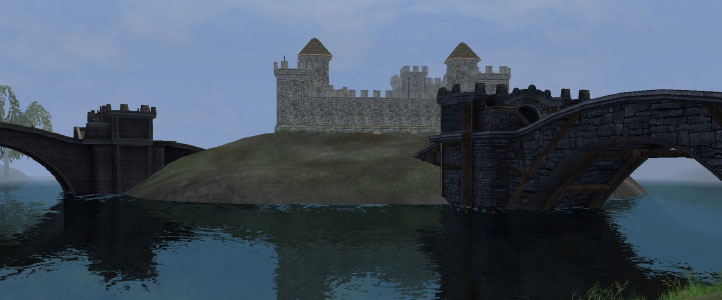
After what happened to me with EA/Mythic, I really wasn’t sure that I wanted to have anything to do with games and the industry again. But as I found out more and more by talking to people, I starting getting angry. And well, anger doesn’t always lead to the dark side. I decided that I wasn’t ready to retire, and that I wanted to go back to making games. However, I knew the type of people I didn’t want to work with again.
The co-founder of City State Entertainment™, Andrew Meggs, is a brilliant dude, an incredibly talented programmer, and best of all, a real human being. When I was able to convince him to start the studio with me, I knew that we had the opportunity to do some great things together. We then had to surround ourselves with an outstanding bunch of guys and gals, which we did. We are in the midst of creating a really fun game, and I never have to see or interact with certain people again, so it’s all good! It’s been a hell of a ride so far, and it’s only going to get better from here.

What lessons did you walk away with when you departed your flagship company?
Lesson one: To quote a film, as I like to do, it’s always the punch that you don’t see coming that puts you down.
Lesson two: EA isn’t always the root of all evil, there are worse people in the industry, and they don’t always work at EA. Though it took me a few years to find out everything that was going on behind my back (like the stuff that EA Louse guy said), I did eventually. I’m persistent that way.
Lesson three: Some people are just broken inside.
Lesson four: That even though I believe in the words gratitude, loyalty, and integrity, they are still foreign words to some people. After what happened, they mean even more to me. I always need to push myself to be even better at what I do, whether as a designer or as studio President.
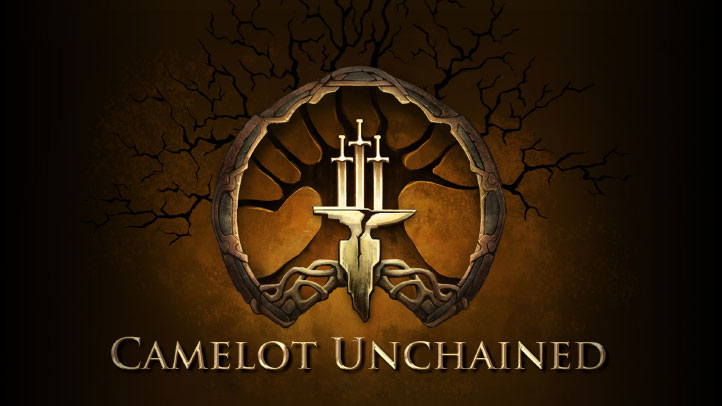
I must admit, before Dark Age of Camelot I completely ruled out ever playing an MMORPG. But then I beta tested Dark Age of Camelot and realized it gave me a chance to share a story taught to me by my family in a setting with the Tuatha de Danann. This is one of the biggest reasons I’m looking forward to your next great title Camelot Unchained™. What can you tell us about your newest project?
Wow, there is so much to tell about this game and I’ve written so extensively about it, even before the Kickstarter began, that I don’t know where to start. I’ll simply list three things that we believe will make Camelot Unchained™ a great game:
We are focusing on RvR. You can’t level your skills by killing NPCs (but there are plenty of NPCs guarding areas, creatures to skin, etc.) and all leveling and skills are 100% based around their effect on RvR. So our Backers and future players will not have to worry if their skills are being diluted because they make killing NPCs too easy, or if the majority of players would rather kill ten rats than kill ten enemy players. Basically, it’s RvR – first, foremost, and forever.
We are willing to take chances with the game’s mechanics, systems, and races etc. If you want another WoW-clone, this game isn’t for you. But if you are looking for a game that will draw ideas from all the MMORPGs (as well as some RPGs), including Dark Age of Camelot, Star Wars: Galaxies™ and other great MMORPGS that have gone before, and at the same time willing to take chances with new ideas, you might like our game. Please check out the BSC (Bat Shit Crazy) presentations we have made, for things like A.I.R. (a system where all spells and abilities actually interact with each other) so that when a fireball hits an icewall, the icewall could melt and/or be turned into steam, or islands that move together, or creating your own spells and abilities. We’re also willing to create dark, dank, and even quite explicit places like The Depths™. But most importantly, we are trying to create a game that our players feel invested in, and not just because they spent money on the Kickstarter, box game, or subscription, but rather because they have spent time building the world and their own little slice of heaven.
We will have a dedicated crafter class which isn’t required to go into RvR to level, gather all their materials, etc. OTOH, none of the other classes can craft/gather/mine/etc. as well as the pure crafter. The crafting systems have been heavily influenced by older games, including my Dragon’s Gate, but with a few interesting, modern twists thrown in as well. The bottom line here is that if you are a crafter, we are giving you more control of the items you create than in any other MMORPG I’ve been a part of, and we are doing this through real-world properties and some mechanics. The system also ensures that there is no way for people to create crafter alts that can simply be fed materials by friends, guild, etc. and quickly level through the skill sets. We believe this will be exciting to people who might not have been interested in Camelot Unchained before, as well as to people who want to play full-time crafters, but are worried that their time and effort can easily be bested by “feeding the crafter mats” situations.
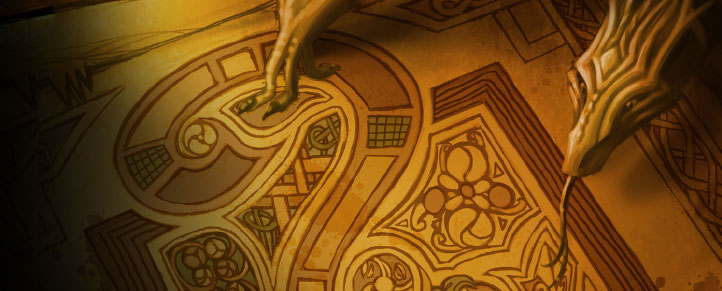
Camelot Unchained has been one of the more public crowdfunded projects to date. What can you tell us about why you decided to crowdfund Camelot Unchained over seeking traditional venture capital funding?
Firstly, I’m putting 2M of my own money into this game, as is one of the former investors at Mythic. Secondly, I didn’t want to go down the VC route, because it would have taken a lot of time and we would have been under pressure to make the game “better,” or more profitable from the perspective of the VCs. This time, I wanted to make a great game for a very niche market. This is the way we can do it, since our Backers are the ones who truly believe in RvR, old-school thinking, etc.
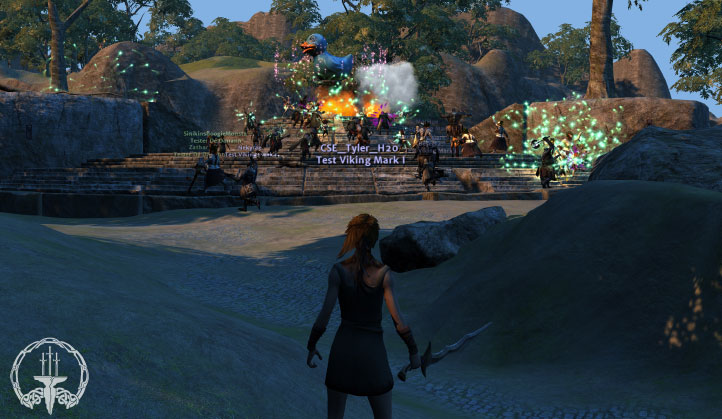
Have the advances in technology over the past decade made creating a game like Camelot Unchained easier or more difficult than its predecessor Dark Age of Camelot?
Both. Technology has improved, but budgets and expectations have as well.
I understand that Camelot Unchained is going to be focused on the realm war genre, however I noticed while browsing concept art that there’s a whole lot of pictures of various dragons. Can we look forward to facing off with these massive beasts? How are you going to work these creatures into the game so they are meaningful and feared?
The role of dragons in this game is not going to be like the very trope-ish dragons in most games. The reveal is going to be interesting.
Talking about PvE elements of Camelot Unchained, what other creatures can we look forward to encountering besides the typical guards and lords? Will these creatures simply be an environmental accent, or will they have a larger part of the story and gameplay mechanics? I would imagine that you might be using these creatures for generating currency through hides, pelts, treasures to help fund the war and crafting side of the game.
Exactly! The creatures in the game will be there to service the economy more than to service a leveling curve.
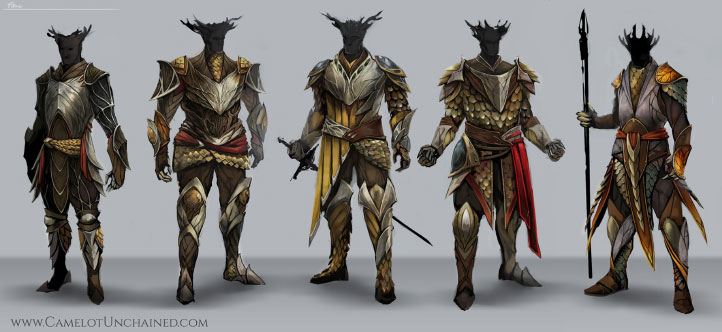
In the realm war how is looting corpses handled? A lot of times in great battles there’s no time to loot corpses. How will Camelot Unchained handle this aspect?
What we’ve said to date (during the BSC Daze) is that our loot system is going to be very different than any other MMORPG, and closer to how some RPGs handle it. Gone is the “Kill ten rats. Get ten drops of crap” system, to be replaced with the concept of a set time period (24 hours right now), during which your activities will be recorded by the server, and then the King will reward you the next day. So while some things may be obtainable right away (skins, mining), other items will be sent to you the next day, once the success of the entire Realm is determined.
What type of objectives will players encounter in the realm war?
Sorry, not ready to talk about this yet. Other than saying that one of the main objectives is to physically put the world’s map back together again.
Being a leader of a large guild, I have to ask, has there been a lot of thought put into the Guild Systems yet? What type of features can guilds look forward to?
Yes, we plan on doing a lot with the guilds. No, we haven’t spent any time on them yet. Think about the Living Guild system in WAR, and you can get some ideas about what I would love to do here, if we have the time and budget.
Will there be guild progression in Camelot Unchained? Perhaps a public viewable herald of accomplishments for guilds displaying their accomplishments to the world?
Unsurprisingly, we will have a robust Herald-like system for this game. Both because I believe in it, but even more importantly, because we had a Stretch Goal for it.
In Dark Age of Camelot there was an incredibly useful XML based data feed of critical Guild and Player information. This unicorn has since disappeared from the MMORPG world. Will it be making a comeback with Camelot Unchained in the form of XML or JSON feed?
What we have now is even better. We are building our entire UI out of Chrome, and players have already begun building addons/mods for it. It’s going to be incredibly easy to do a lot of interesting things that we could only dream of back in 1999.
Has there been any discussion on the maximum size of guilds? Will Guilds like Gaiscioch be forced to split into separate guilds to play together, or will there be a high enough cap where a thousand players can play together as they have for over a decade?
Undetermined, and frankly, undiscussed as of yet. This is going to be one of the subjects that we will discuss with our Backers, just as we have done everything from the BSC Daze to t-shirt design, the Drengr, and soon the crafting system. As our surveys and behavior on the Forums have shown, we meant it when we said we were going to be very communicative with our Backers. And by communicative, I don’t mean talking at our Backers but talking with them and getting their feedback. That is something reasonably unique, even for Kickstarters.
Are there plans to create an Alliance system to link like minded guilds together and provide them with means of communication such as Dark Age of Camelot did?
Yes.
Are there plans to make data accessible to mobile devices such as interactive real time war maps, leaderboards, etc?
Not plans exactly, but we want to be able to do some interesting things on the mobile side. Everything depends on budget, however. OTOH, because we are being so open about addons/mods, we expect players to set up a lot of these types of things on their own. BTW, that’s already happening, even in IT.
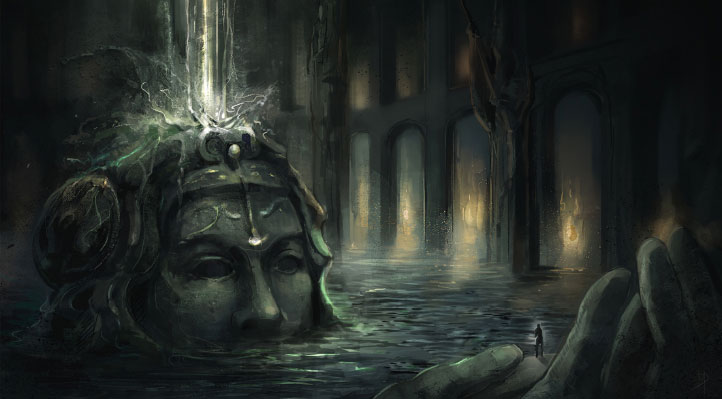
Games can be wonderful learning tools to help teach mythology to the youth of today. How much are you leveraging real historical mythology this time? I know in Dark Age of Camelot the Hibernian mythos was a bit off particularly, such as making the epic quest line for nature path Hibernians need to kill Bran the Giant, who in folklore was the Sea God’s bastard son. Are you distancing the game from the actual mythos, or are you trying to make this version more in sync with the actual mythology?
Both. Camelot Unchained takes place in a post-apocalyptic world. Some of what we have already created is based heavily on lore/mythology, and some of our other stuff is not.
Will there be housing in Camelot Unchained for players and guilds to display their achievements?
Yes, housing is confirmed, and we have already had players begin to play around with the first pass of our building system. In terms of ways for players and guilds to display their achievements, absolutely! That is part of the plan, with everything from merely upgraded building materials to being able to get trophies, rewards, etc. for your actions as players and guilds in the game.
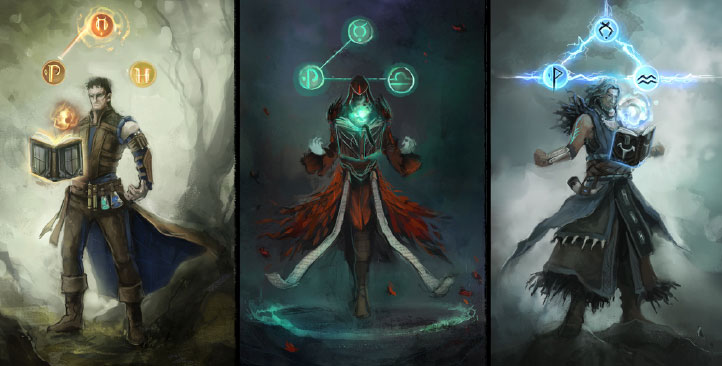
Will there be small scale arenas or battlegrounds for structured PvP?
Not in the traditional sense. We’ve been very clear that we are going to create an almost exclusively open world (I’ve said it can’t be 100%, due to some items listed here), that will have three safe starting cities, and that we reserve the right to have a starting area Battleground-like mechanism for new players to learn how to play the game. Other than that, there won’t be other BGs or BG-like places.
How do you plan to introduce players to Siege Warfare if they join the game months after launch? Will there be a new player friendly siege area for learning?
Exactly! As per above.
What types of Siege Weapons can we expect?
In truth, we haven’t even begun talking about traditional siege weapons yet. What we have been talking about are some of the types of spells that our mage-types will get, which are designed for use in sieges. Some of these spells might also be useful in PvP combat, but some will not be. So players should think of siege engines as being the players themselves, as well as the more typical catapults (or in our case, luchapults).
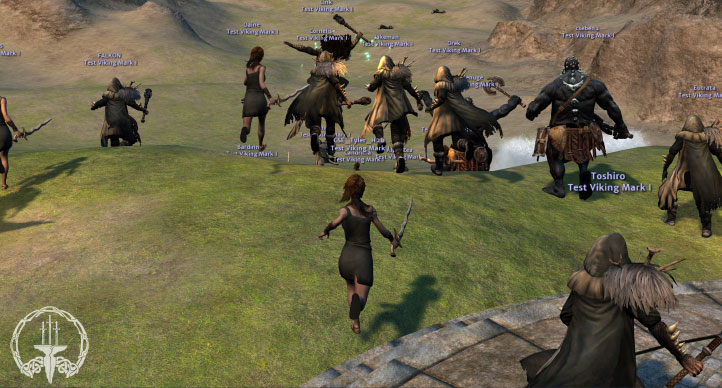
In the long term plan for Camelot Unchained how do you plan to grow the game to keep it from growing stale? Most games introduce expansions and patches with new PvE content and storylines. With Camelot Unchained I imagine that’s going to be a bit more challenging with a Siege focus. Have you started planning for the long term post launch introduction of fresh new content?
Nope, we need to focus on making our current game great, without worrying about what comes afterward. If we don’t make a great game before launch, any specific plans that we had for post-launch would be moot. So we need to focus on being great at launch, and worry about the future as we get closer to that day.
In the end what is the Unicorn that players will chase for years on end? What do you have in store to motivate people to keep playing?
Sorry, there are no Unicorns in our game, they didn’t survive the first of the Veilstorms. As to what players are going to keep chasing, well, besides each other’s castles, keeps, mines, forests, etc., there will be ongoing extender packs and expansion of areas like The Depths™. We also plan on adding new classes and races, depending on how launch goes of course, as per above.
Do you have any final inspiring words for someone currently at that point where they have a chance to create a new beginning?
Embrace the best of your best, learn from your failures, and don’t be afraid to do something different.
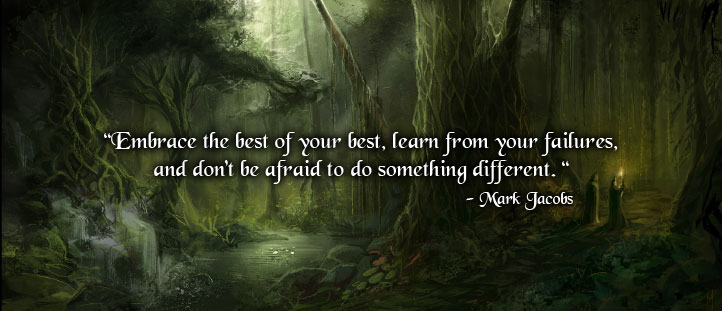
About the Author
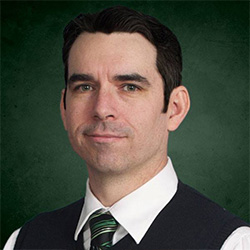
Foghladha
Managing Editor
Foghladha founded the Gaiscioch Social Gaming Community in 2001 and has since been the founder & activities director for this well known community. His role has gone beyond just running the Gaming Community and now includes running the Athletics Program in Portland, Oregon, as well as acting as the Managing Editor of the Gaiscioch Magazine, and is the Lead Producer on the Gaiscioch Livestream Productions. Additionally he networks with game developers to form relationships between Gaiscioch and development studios.
His experience in publishing dates back to helping his Grandparents who operated a printing press for over 40 years. In high school and college Benjamin excelled in journalism and played an active part in the school newspaper. Foghladha currently works full time as the director of technology for a franchise trade publication & education company.
